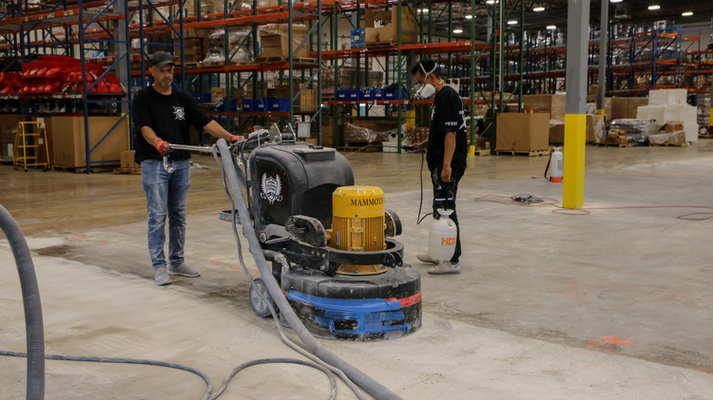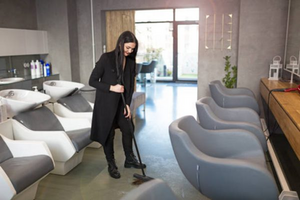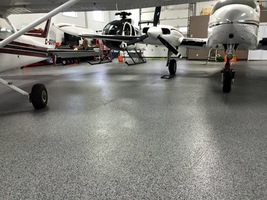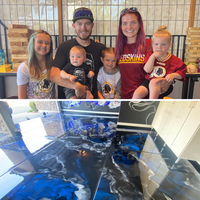
Do you REALLY need to prep your floors before epoxy application?
I think a better question to ask would be, how BAD will my floors turn out if I DON’T prep the concrete?
How long will they last?
As an installer, will this finished product represent me or my company in a positive way?
Why Prep The Concrete?
Floor prep is an essential part of the epoxy coating process. In our opinion, it should be a non-negotiable for everyone to do this. It would be like trying to wrap a car without following any prior direction and expecting the wrap to just adhere. It may adhere, but it won’t look perfect or last very long. It is a non-negotiable that you clean your floor thoroughly before proceeding. Should there be any cracks or divots, make sure to patch and sand them before cleaning the concrete.
Double-check the surface of the floor twice before beginning to grind to look for any grease or oil stains, as the floor would require degreasing. Grease, oil, dust, debris, or moisture in the concrete can interfere with the epoxy bonding to the concrete, resulting in a bad floor.
What Can Go Wrong If I Don’t Prep My Floor?
Basically, the point of floor prepping is to ensure that the resin will bond properly to the concrete surface. Diamond grinding with a heavy-duty grinder ensures that the pores of the concrete are opened, thus having more surface area available at a microscopic level. This allows the resin to really stick on and last longer. Any imperfect or uneven areas can also be quickly smoothed over by a grinder.
Some people like to use acid washing, especially DIYers because you don’t need access to heavy equipment, so it’s a lot less expensive and more convenient than traditional diamond grinding. Unfortunately, acid washing does not create the even surface preparation that grinding does, and should especially not be used by professional installers offering a service (in our opinion).
Bottom line is, if you don’t properly prepare your concrete floors, the epoxy won’t last very long and you will experience numerous issues from bubbling, orange-peel effect, or tackiness. A simple process can turn into an annoying, time-consuming repair if the surface is not correctly prepped. We have seen countless floors with beautiful potential fail after application, because of improper floor preparation.
Suggested Process:
Remove clutter, furniture, and anything from the floor.
Sweep or vacuum away any dirt or dust from the floor.
Should there be any gum, mud, or sticky substances on the floor, remove them with a metal putty knife.
Use a chemical degreaser if you have any greasy areas,
Fill or Patch any holes, cracks, or divots.
Use a pressure washer, or thoroughly clean the floor with denatured alcohol on a Swiffer mop.
Check for moisture in the concrete, you can use a concrete moisture meter.
If possible, use a diamond grinder and grind the floor, basically grinding away the top layer of the concrete.
Once the surface of the concrete is white in color, you are ready.
Vacuum thoroughly and swipe with denatured alcohol before applying the epoxy.







